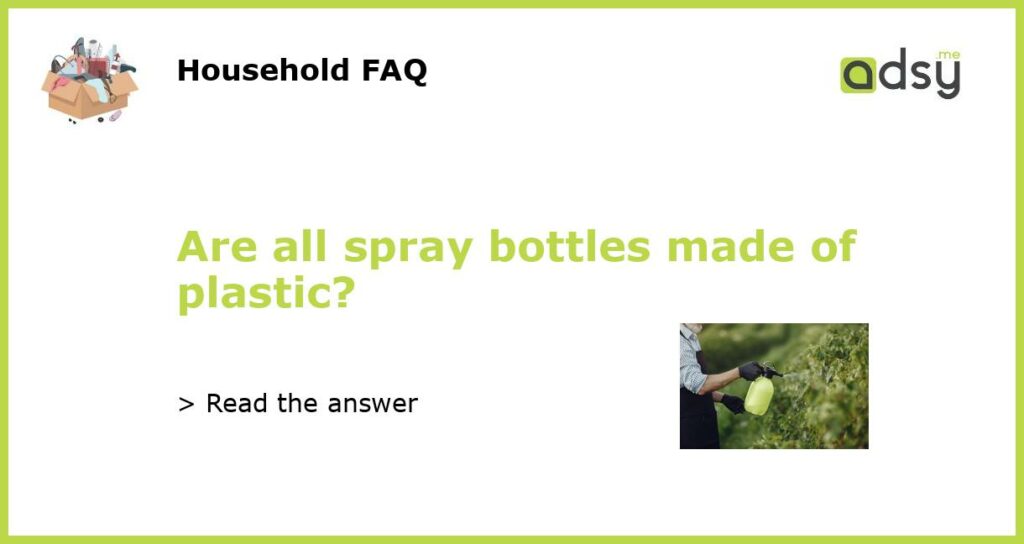Yes, most spray bottles are made of plastic
Spray bottles are commonly used for various purposes such as cleaning, gardening, and personal care. They are designed to hold liquid and dispense it in a fine mist or spray. While there are some spray bottles made of alternative materials such as glass or aluminum, the vast majority of spray bottles on the market are made of plastic.
The advantages of using plastic spray bottles
Plastic spray bottles offer several advantages over other materials. First and foremost, they are lightweight, making them easy to handle and transport. Plastic is also a durable material, making spray bottles resistant to breakage and shattering, reducing the risk of accidents.
Additionally, plastic spray bottles are often transparent or semi-transparent, allowing users to easily see the contents and the level of liquid inside. This is especially helpful for determining when a refill is needed or if the liquid needs to be shaken before use. The transparency of plastic spray bottles also allows users to identify the contents at a glance.
Types of plastic used for spray bottles
Several types of plastic are commonly used for manufacturing spray bottles. The most common type of plastic used is polyethylene terephthalate (PET) and high-density polyethylene (HDPE), both of which are lightweight and flexible.
PET is commonly used for single-use bottles, such as those used for various household cleaners and personal care products. HDPE, on the other hand, is more commonly used for durable and reusable spray bottles, such as those used for gardening or industrial applications.
Other types of plastic such as polypropylene (PP), polystyrene (PS), and polyvinyl chloride (PVC) may also be used, but they are less prevalent in the manufacturing of spray bottles due to their specific characteristics and limitations.
Environmental concerns surrounding plastic spray bottles
While plastic spray bottles offer convenience and functionality, there are growing concerns about their impact on the environment. Plastic is a non-biodegradable material, meaning it does not break down naturally over time. As a result, plastic spray bottles contribute to the global plastic pollution problem.
Plastic pollution has become a significant environmental issue, with plastic waste ending up in oceans, landfills, and natural habitats, causing harm to wildlife and ecosystems. Additionally, the manufacturing and disposal of plastic bottles contribute to greenhouse gas emissions and energy consumption.
Efforts are being made to address these concerns, including the development of biodegradable and plant-based plastics as alternatives. These materials are designed to break down more quickly and have a reduced environmental impact. However, they are not yet widely available or cost-effective compared to traditional plastic materials.
Alternatives to plastic spray bottles
While plastic spray bottles dominate the market, there are alternative options available for those seeking alternatives. Glass spray bottles are one such option, offering a more eco-friendly and aesthetically pleasing alternative to plastic. Glass is a recyclable material and does not have the same environmental concerns as plastic.
Another alternative is aluminum spray bottles. Aluminum is lightweight, durable, and recyclable. These bottles are often used for personal care products and can be refilled and reused multiple times, reducing waste.
However, it’s important to note that glass and aluminum spray bottles may be more expensive than plastic options. They also have different properties and may not be suitable for all types of liquids or applications. It’s essential to consider the specific needs and requirements before choosing an alternative spray bottle material.






